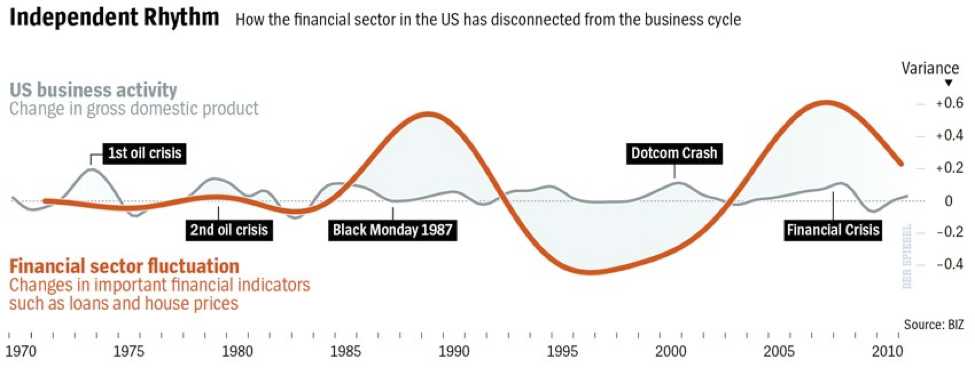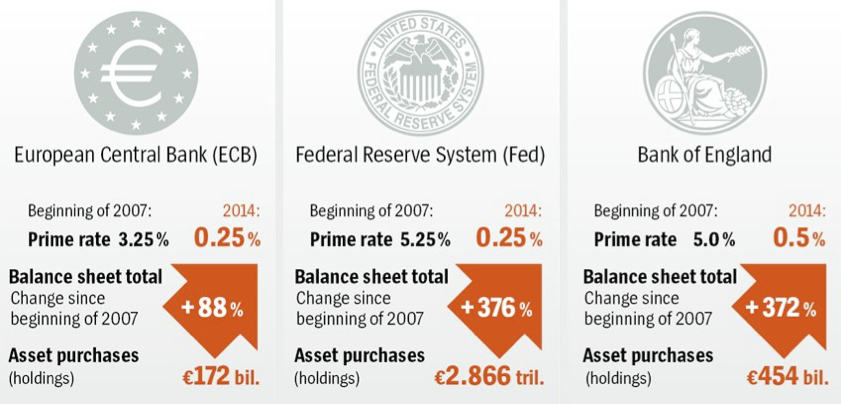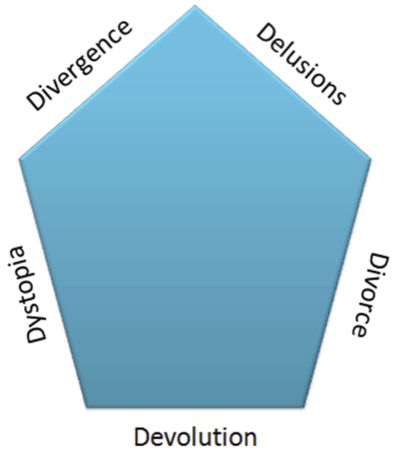This commentary serves as an initial attempt to explain the financial crisis, the current market upswing, and the potential brewing crisis which in a few years time could change the economic landscape for generations to come. Here is the thesis of this commentary: So long as a nation retains industrial and trading advantages over competitors (e.g. Great Britain in the 19th and beginning of the 20th century, or the US in the 1940s-1960s), its currency and thus the financial obligations/liabilities it accumulates abroad (by circulating its currency) are sustainable. However, when financial capital overtakes industrial capital and the industrial/trading advantage is lost, then the nation is forced to experience a divorce between the two interests (industrial and financial), and the only way feasible to have its reserve currency continue serving in that global role is to experience a divergence between economic business cycle and the financial cycle.
The latter ends up building financial (paper) but not real wealth – as the latter can only be built up through real capital accumulation – and in the process misconstrues what risk is, making its assessment biased, and thus leading to capital misallocation. The buildup of paper wealth creates illusionary expectations that drive market participants (including households, governments, corporations, and financial institutions) into overspending mode based on delusions that paper assets created by debt creation and paper-asset collateralization is a permanent state of affairs. When that happens the financial cycle reigns supreme over the business cycle (see graph below,), but the buildup of such divergence is a cry out for a crisis so that the system can breathe. (The graph below is taken from Claudio Borio’s work – head economist of the Bank of International Settlements a.k.a. the central bank of central banks – on financial cycles, however the arguments of this commentary are not related with the arguments presented in Borio’s work)
The root cause of this process is that the system operates without a monetary anchor, so that a crisis is needed in order to devalue assets whose appreciation has been divorced from capital considerations. However, the maturity of the divorce and the fact that market participants are delusional as to what money is, leads to a gradual reduction of available tools to fight the crisis, leaving the policy makers with limited options and driving them to implement programs that end up making the gap even bigger.
Hence, the cause (whether e.g. that is over-extension of credit, lower interest rates, or over-issuance/collateralization of debt instruments including toxic paper assets) is perceived as the remedy, leading the fiscal and monetary authorities to overblown balance sheets, as shown below.
Such overblown balance sheets leak to the financial markets, leading to delusional gains in bond/debt and equities markets. As those markets are re-energized they feed the next crisis and the fuel for that impeding fire is nothing less than the remedy applied. The efforts made to sustain the unsustainable (e.g. The Fed’s effort to sustain Great Britain’s re-entry into the gold standard in the mid 1920s) eventually lead to a crisis that cannot be contained using the conventional remedies (e.g. the Great Depression), therefore the times call for a monetary devolution or a deus ex machina (WWII, new international monetary mechanisms implemented at Bretton Woods ) that can repudiate debts and push the restart button again, otherwise the prevailing dystopia will create chaos .
As noted in previous commentaries we maintain our position that unless we implement devolutionary types of reforms in the next few years that will radically alter the credit creation mechanisms and in the process we abandon the fiat money system, we may be facing the mother of all crises whose outcome we may deeply regret. Let’s hope that the pentagon of the Ds (see below) will lead us to a much needed devolution rather than to another dystopia.



